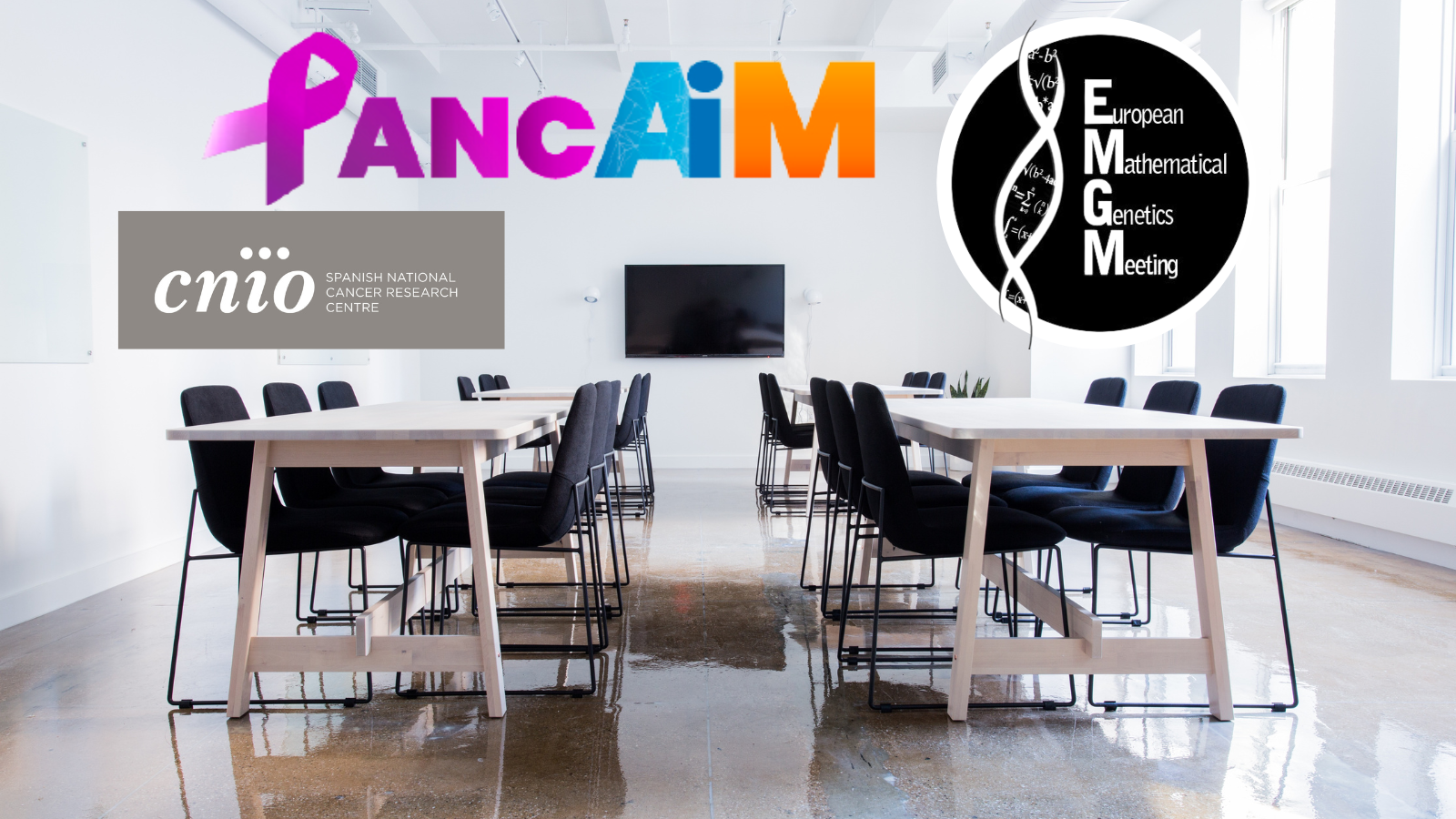PANCAIM team members Evangelina López de Maturana and Sergio Sabroso from the Spanish National Cancer Research Centre (CNIO) represented PANCAIM at the European Mathematical Genetics Meeting 2022 (EMGM) in Cambridge, which took place from 21-22 April 2022. The EMGM focuses on methods and applications in a broad range of topics in mathematical and statistical genetics and genetic epidemiology.
The PANCAIM poster presentation session addressed the topic of the approaches and challenges of artificial intelligence and in particular the integration of multi-omics and non-omics data. A multi-omic approach is key in PANCAIM, where the ambition is to build the largest collection of PDAC multi-omics data and develop and validate AI-assisted integrated analysis of geno- and imaging phenotyping of PDAC, in order to provide the best possible treatment for each individual patient.
The challenges identified by the PANCAIM team for such a multi-omic approach include, among others, the following:
- correlation and interaction between data types
- disease heterogeneity
- population substructures
- fairness between different sets of data
- lack of study design models
- statistical power: n<<p scenario
- shortage of statistical test
- lack of studies to validate/replicate results
- lack of functional information to interpret results
- dynamic nature of the health / pathological process
- econ-omics
A PDF version of the poster can be found here.
The presenters received positive feedback and some useful comments on a package that allows reducing the batch effect when integrating different populations, which will be very useful in PANCAIM. However, more discussions about integromics and multi-modal health data should be had, as many questions remain open and the topic will continue to grow in relevance.
Overall, the knowledge shared at the conference was very interesting and relevant to PANCAIM: “the majority of techniques centred around Mendelian Randomization, which works very well with genomic data. Many variants and alternatives were explained that we are sure will be useful in the future of our research and innovation project!”
